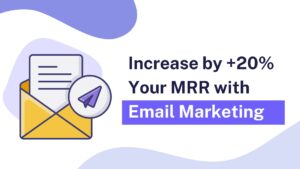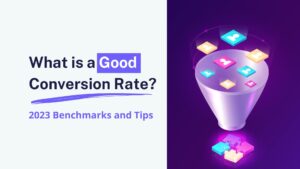Are you struggling to determine the best pricing strategy for your B2B SaaS product? You’re not alone. Pricing can make or break a product, and it’s often the most challenging aspect of launching a new SaaS solution. In this comprehensive guide, we will explore the various aspects of B2B SaaS pricing to help you create a winning strategy. So, buckle up, and let’s embark on this exciting journey to unlock the secrets of successful pricing.
Understanding B2B SaaS Pricing
What is B2B SaaS Pricing?
B2B (business-to-business) SaaS (Software as a Service) pricing refers to the process of determining the cost of a cloud-based software product or service that is sold to other businesses. The primary goal of a B2B SaaS pricing strategy is to find the sweet spot that makes your offering attractive to customers, while also generating revenue and ensuring long-term profitability for your company.
Why is B2B SaaS Pricing Important?
Establishing the right pricing model for your SaaS product can have a significant impact on your business success. A well-thought-out pricing strategy can:
- Attract and retain customers
- Drive revenue and profitability
- Differentiate your product from competitors
- Encourage upsells and cross-sells
- Support your company’s growth and scalability
B2B SaaS Pricing Models
There are several pricing models you can consider for your SaaS product. Here’s an overview of some of the most popular options:
1. Subscription-Based Pricing
Subscription-based pricing is the most common model for SaaS products, where customers pay a recurring fee (usually monthly or annually) to access the software. This model provides predictable revenue, allows for easy scalability, and encourages long-term customer relationships.
2. Usage-Based Pricing
The usage-based pricing model, also known as pay-as-you-go or metered pricing, charges customers based on their consumption of the software or service. This model can be attractive to customers who prefer to pay only for what they use and can help you capture revenue from varying levels of usage.
3. Tiered Pricing
Tiered pricing offers multiple plans with different features and pricing levels, allowing customers to choose the plan that best suits their needs and budget. This model enables you to cater to a broader customer base and encourages upgrades as customers’ needs grow.
4. Per-User Pricing
Per-user pricing charges customers based on the number of users who access the software. This model is suitable for businesses with multiple users who need individual access to the software and can generate more revenue as customers add users.
5. Freemium Pricing
Freemium pricing offers a basic version of your software for free, with premium features available for a fee. This model can help you acquire new customers, who may later convert to paying customers as their needs evolve.
Developing a Winning B2B SaaS Pricing Strategy
Now that you have a better understanding of the various B2B SaaS pricing models, let’s dive into the process of developing a winning pricing strategy.
1. Understand Your Target Market
To create a successful pricing strategy, you must first understand your target market. Research the demographics, industries, and pain points of your potential customers to better tailor your product and pricing to their needs. This understanding will help you determine which pricing model and tiers are most likely to resonate with your audience.
2. Analyze Competitors
Take a close look at your competitors’ pricing strategies and offerings. This analysis will help you identify gaps in the market, understand the competitive landscape, and position your product effectively. Keep in mind that you don’t need to copy their pricing – you can differentiate yourself with unique features, better value, or superior customer support.
3. Determine Your Costs
Before setting your prices, it’s essential to understand your costs. Calculate the cost of developing, maintaining, and supporting your product, including infrastructure, software, labor, marketing, and sales. This information will help you establish a baseline for your pricing, ensuring that you cover expenses and maintain profitability.
4. Set Value-Based Prices
Value-based pricing focuses on the value your product provides to customers, rather than the cost to produce it. Determine the value of your product by understanding how it solves customers’ problems, saves them time, or helps them achieve their goals. This approach can help you set prices that reflect the true value of your software and appeal to customers who are willing to pay for that value.
5. Test and Iterate
Once you’ve established your initial pricing strategy, it’s crucial to test its effectiveness and be prepared to iterate as needed. Monitor customer feedback, conversion rates, and revenue to identify areas for improvement. Continually refine your pricing based on data and feedback to maximize your success.
Best Practices for B2B SaaS Pricing
To further ensure the success of your B2B SaaS pricing strategy, consider these best practices:
Offer Clear and Transparent Pricing
Make sure your pricing is easy to understand and transparent. Clearly communicate the cost, billing frequency, features, and any additional fees. This clarity will help build trust and make it easier for customers to make a purchasing decision.
Provide Flexible Payment Options
Offer multiple payment options, such as monthly or annual billing, to accommodate customers’ preferences and budget constraints. Providing flexibility can help attract a wider range of customers and increase retention.
Regularly Review and Adjust Pricing
The market and customer needs are constantly evolving. Regularly review and adjust your pricing to remain competitive, account for cost changes, and better align with the value your product provides.
Offer Discounts and Promotions
Consider offering discounts or promotions to incentivize customers to sign up, upgrade, or commit to a longer-term contract. These incentives can help increase conversions, customer loyalty, and revenue.
Monitor Key Metrics
Track key metrics, such as customer acquisition cost, churn rate, and lifetime value, to measure the success of your pricing strategy and make data-driven decisions for optimization.
Key Takeaways
- Understand your target market: Research your potential customers’ demographics, industries, and pain points to create a tailored pricing strategy that resonates with them.
- Analyze competitors: Evaluate your competitors’ pricing strategies to identify gaps in the market and position your product effectively.
- Determine your costs: Calculate the costs associated with developing, maintaining, and supporting your product to establish a baseline for your pricing.
- Set value-based prices: Focus on the value your product provides to customers and set prices that reflect that value.
- Test and iterate: Continuously monitor your pricing strategy’s effectiveness, and be prepared to make adjustments based on data and feedback.







